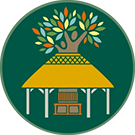-
Art Design Progression of Skills
download_for_offline
↑
download_for_offlineArt Design Progression of Skills
- DT Skills Progression download_for_offline
download_for_offlineDT Skills Progression
- LTP Art Design download_for_offline
download_for_offlineLTP Art Design
- LTP Design Technology download_for_offline
download_for_offlineLTP Design Technology
Art & Design Technology
Intent
At East Claydon C of E School, we aim to provide an Art and Design Curriculum that builds on a child’s early creative experiences whilst enabling them to express themselves in a practical and inspiring way.
Through learning about a wide range of Art and Crafts, from various cultures, we hope to not only develop the children’s passion and love of the subject but also build a respect, natural inquisitiveness and an appreciation of art in all its forms which they may carry with them throughout their lives. Art and Design stimulates imagination and creativity; involving children in a range of visual, tactile and sensory experiences, which enable them to communicate what they see, think and feel in a range of ways, regardless of their ability. Art and Design, at East Claydon C of E School, promotes careful observation and an appreciation of the world around us. Through learning about the roles and functions of art, children can explore the impact it has had on contemporary life and on different periods and cultures. The aims of teaching Art and Design in our school are:
• To engage, inspire and challenge pupils, equipping them with the knowledge and skills to experiment, invent and create their own works of art, craft and design.
• As pupils progress through school, they should begin to think critically and develop a more rigorous understanding of art and design. They should also know how art and design both reflect and shape our history, and contribute to the culture, creativity and wealth of our nation.
• To produce creative work, exploring their ideas and recording their experiences.
• To become proficient in drawing, painting, sculpture and other art, craft and design techniques
• To evaluate and analyse creative works using the language of art, craft and design.
• To know about great artists, craft makers and designers, and understand the historical and cultural development of their art forms.
Implementation
Throughout their time at East Claydon C of E School, the children are given a range of opportunities to explore a wide variety of materials and techniques, developing their skills and thinking as young artists, using the Curriculum Maestro scheme to form the basis of our Art and Design curriculum.
The curriculum is progressive and so allows the children to build on skills, knowledge and techniques year on year. Throughout each unit, the children build on previous understanding through five areas of content: making skills, generating ideas, formal elements, knowledge of artists and evaluating their work. Various media types are explored within each unit to give the widest possible range of experiences for all children. The materials and media used are revisited throughout units and year groups to ensure progression of skills previously developed. Children have access to key knowledge, language and meanings, through the use of knowledge organisers, in order to understand and readily apply new terminology to their work in Art and across the wider curriculum.
Impact
Through following a clear and comprehensive scheme of work in line with the National Curriculum, it expected that teaching and learning will show progression across all key stages within the strands of Art and Design. Subsequently, more children will achieve age related expectations in Art at the end of their cohort year and Key Stage. It is our aim that children will retain knowledge and skills taught within each unit of work, remember these and understand how to use and apply these in their own art work, whilst beginning to understand what being in ‘artist’ means. At East Claydon C of E School, we are able to measure the impact that Art and Design has had for all children by:
• Determining the extent to which objectives are met within each lesson and overall, at the end of each unit.
• Summative assessment of pupil discussions about their learning.
• Images of the children’s practical learning.
• Interviewing the pupils about their learning (pupil voice).
• Moderation staff meetings where pupil’s books are scrutinised and there is the opportunity for a dialogue between teachers to understand their class’s work.
• Annual reporting of standards across the curriculum.
By the time children leave East Claydon C of E School, we want them to have developed a passion for art and creativity, working both independently and collaboratively. They will have grown in confidence when using a range of tools and techniques, becoming artists that can apply the skills and knowledge that they have developed throughout the years and respond critically to their own and other’s work.
- DT Skills Progression download_for_offline

